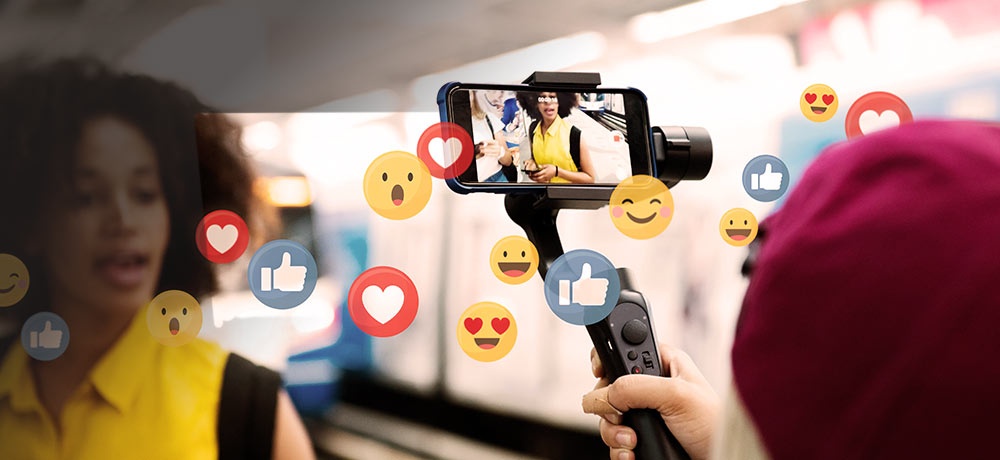Crafting Irresistible Calls to Action that Convert Website Visitors
They've browsed your website, explored your content, and even lingered on a product page. Now, what do you want them to do? That's where the magic of the call to action (CTA) comes in. A well-crafted CTA is the bridge between website visitor and engaged customer, the gentle nudge that turns curiosity into action. But how do you craft CTAs that are truly irresistible, ones that convert visitors into leads and leads into loyal customers?
Know your audience:
It all starts with understanding your ideal customer. What are their needs, desires, and pain points? Speak their language, address their concerns, and offer solutions that resonate. A generic "Buy Now" might work for some, but a targeted "Unlock Your Dream Kitchen Today" for someone browsing kitchen renovation services will be far more impactful.
Clarity is king:
Don't leave your visitors guessing. Your CTA should be clear, concise, and instantly tell them what clicking will achieve. "Subscribe for Exclusive Offers" leaves no room for doubt, while "Learn More" is vague and uninspiring.
Action verbs fuel desire:
Use strong action verbs that create a sense of urgency and excitement. "Download Your Free Ebook" is more engaging than simply "Ebook." Words like "Start," "Get," "Join," and "Discover" spark a desire to act.
Benefits, not features:
Focus on the benefits your offer provides, not just the features. Instead of "Sign Up for Our Newsletter," highlight the value: "Get Insider Tips & Exclusive Discounts."
Scarcity creates urgency:
Limited-time offers, limited quantities, or early access opportunities can create a sense of urgency and encourage immediate action. "Limited Spots Left! Register for the Webinar Now" is more likely to get clicks than "Join Our Webinar."
Design matters:
Don't let your CTA blend into the background. Use contrasting colors, clear fonts, and strategic placement to make it stand out. A well-designed button can be the difference between a click and a scroll-by.
Test and refine:
Don't assume you've nailed it on the first try. A/B test different CTAs, track their performance, and adjust your approach based on the data. What resonates with one audience might not work for another, so be flexible and data-driven.
Remember:
A great CTA isn't just a button; it's an invitation, a promise, and a bridge to a deeper relationship with your brand. By understanding your audience, focusing on clarity, benefits, and urgency, and testing different approaches, you can craft CTAs that are truly irresistible, converting website visitors into loyal customers and propelling your business forward.
Bonus tip: Don't forget the power of personalization! Dynamic CTAs that adapt to user behavior or previous interactions can be even more effective in driving conversions.
Now go forth and craft those irresistible CTAs! Remember, the right words and design can make all the difference in turning website visitors into happy customers.
Need help with digital marketing? Our marketing experts are ready to help! Book a free consultation with us and let’s bring your business to life!
Unleashing the Power of Creativity: Guerrilla Digital Marketing for the Curious
In the ever-evolving digital landscape, standing out from the crowd can be a challenge. Traditional marketing methods often feel like a sea of sameness, leaving you wondering how to break through the noise and capture attention. That's where guerrilla digital marketing comes in, offering a refreshingly unconventional approach to marketing that's sure to pique your curiosity.
Guerrilla digital marketing isn't about breaking the bank or crossing ethical lines. It's about tapping into your inner marketing maverick, embracing creativity, and using low-cost, ingenious tactics to make a lasting impression.
But before you dive headfirst into the world of guerrilla marketing, let's explore the pros and cons to help you make an informed decision.
Pros:
Low-cost effectiveness: Guerrilla campaigns don't require a hefty marketing budget. With a bit of imagination and resourcefulness, you can achieve remarkable results with simple yet effective strategies.
Unconventional brilliance: Guerrilla marketing encourages you to think beyond the ordinary, to come up with innovative ways to connect with your audience and spark conversations.
Engagement agnet: Guerrilla campaigns are designed to make your brand the talk of the town, generating excitement and buzz that can elevate your online presence.
Cons:
Measurement enigma: Guerrilla campaigns can be tricky to quantify. Their effectiveness may not always translate directly into sales or leads, making it challenging to assess ROI.
Audience perception: It's crucial to ensure your guerrilla tactics resonate with your target audience. Avoid anything that could be perceived as unprofessional or offensive, potentially damaging your brand reputation.
Legal considerations: Respect copyright laws and privacy regulations. Stay within the boundaries of what's acceptable and ethical.
The question now is, is guerrilla marketing right for your business?
Target sudience: If your target audience comprises tech-savvy millennials or Gen Z, guerrilla marketing's unconventional style will likely resonate with them.
Brand image: Guerrilla marketing aligns well with brands that embrace boldness, creativity, and a touch of irreverence.
Marketing goals: If your primary objective is to generate buzz, drive traffic, and build a strong online presence, guerrilla marketing can be a powerful tool.
Seeking expert guidance: While guerrilla marketing offers a unique opportunity to stand out, it's crucial to approach it with careful planning and consideration. Partner with experienced marketing professionals who can guide you in developing effective guerrilla campaigns that align with your brand and target audience.
Now that you've had a taste of the world of guerrilla digital marketing, let curiosity pique your interest and spark your imagination. Explore the unconventional, embrace creativity, and unleash the power of guerrilla marketing to elevate your brand and elevate your business.
Book a free consultation with our experts at Webware today to discover how guerrilla digital marketing can help you achieve your marketing goals and leave a lasting impression on your audience.
Bundling Up Small Business Services for a Warmer Welcome
As the temperatures drop and snowflakes start to fall, homeowners turn their attention to winterizing their homes to ensure they're comfortable and safe throughout the chilly months. This presents a unique opportunity for small service-based businesses to bundle together related services and offer attractive packages that address the specific needs of homeowners during this time.
The power of bundling
Bundling services can be a win-win proposition for both businesses and customers. For businesses, bundling offers several advantages, including:
Increased sales: Bundling multiple services into a single package can make the overall offer more appealing to customers, leading to higher sales volume.
Improved profitability: By combining services, businesses can reduce overhead costs, such as travel time and equipment usage, which can boost profitability.
Enhanced customer satisfaction: Bundling services can provide customers with a comprehensive solution, saving them time and money. This can lead to increased customer satisfaction and loyalty.
Creating winning bundles
When creating service bundles, it's important to carefully consider the needs of your target customers and the specific services you offer. Here are some tips for creating winning bundles:
Identify complementary services: Choose services that naturally complement each other and address common winter-related concerns. For example, you could bundle chimney cleaning with furnace maintenance or offer a package that includes snow removal, gutter cleaning, and ice dam prevention.
Consider cross-selling opportunities: If you offer a variety of services, explore opportunities to cross-sell complementary services within the bundle. For instance, if you offer plumbing services, you could include a drain cleaning or water heater tune-up as part of a winterization package.
Prioritize value: When pricing your bundles, focus on providing customers with exceptional value for their money. Consider offering discounts or promotions to make your bundles even more attractive.
Promoting your bundled services
Once you've created your service bundles, it's important to promote them effectively to reach potential customers. Here are some effective marketing strategies:
Leverage your website and social media: Include information about your bundled services on your website and social media pages. Use engaging visuals and clear descriptions to highlight the benefits of each bundle.
Send email campaigns: Segment your email list and send targeted emails to customers who are likely to be interested in winterizing services. Promote your bundles with compelling subject lines and informative content.
Partner with local businesses: Collaborate with other businesses in your area to cross-promote your bundled services. Offer exclusive discounts or promotions to customers who book through your partners.
Attend community events: Participate in local events and fairs to showcase your bundled services to potential customers. Offer demonstrations or giveaways to attract attention.
Track your results: Monitor the performance of your marketing campaigns by tracking website traffic, social media engagement, and leads generated from your bundled services. Use this data to refine your strategies and improve your results.
By following these tips, you can create and promote effective service bundles that attract new customers, boost sales, and increase your profitability during the winter months.
Book a free consultation with our experts at Webware today to discover more on bundling services as a great way to provide customers with comprehensive solutions, enhance your brand reputation, and establish yourself as a trusted resource for winter home care needs.
Winter Wonderland: How to Thrive in the Off-Season as a Home Services Business
As the snow starts to fall and the days grow shorter, many home services businesses face a common challenge: a decline in customer demand. While the winter months may not be the busiest time for services like landscaping or pool maintenance, this doesn't mean your business has to take a backseat. By implementing strategic marketing campaigns during the off-season, you can not only maintain your visibility but also generate new leads and build brand loyalty. Here are five key reasons why off-season marketing is crucial for home services businesses:
1. Stay Top of Mind During the Slow Season
While it may seem counterintuitive, marketing during the off-season is essential for keeping your brand fresh in the minds of potential customers. When you're not actively bidding on projects or providing services, your competitors may be taking a break from marketing. This gives you a unique opportunity to stay visible and build anticipation for your services when the next busy season arrives.
2. Offer Seasonal Services and Packages
While some services may be less popular during the winter, there are still plenty of ways to keep your business busy. Consider offering seasonal services such as winterizing pipes, snow removal, or chimney cleaning. You can also create special packages or discounts that appeal to customers looking for ways to prepare for the winter months.
3. Engage Your Existing Customers
Don't forget about your existing customers! During the off-season, it's a great time to reconnect with them and show them how much you appreciate their business. Send out email newsletters with tips for winterizing their homes, offer discounts on regular maintenance, or host a special event for your loyal customers.
4. Leverage Social Media and Email Marketing
Social media and email marketing are powerful tools that can help you reach a wider audience during the off-season. Create engaging content that showcases your expertise, shares seasonal tips, or promotes special offers. Run targeted social media ads to reach potential customers in your area. And don't forget to nurture your email list with regular newsletters and updates.
5. Partner with Local Businesses
Collaborating with local businesses can help you expand your reach and reach new customers. Partner with restaurants or retail stores to offer discounts or promotions to their customers. Sponsor local events or community initiatives. By getting involved in your community, you can increase brand awareness and establish yourself as a trusted resource in the area.
By following these strategies, you can ensure that your home services business remains visible and profitable throughout the year. Remember, off-season marketing isn't about generating immediate sales; it's about building relationships, establishing brand loyalty, and preparing for a strong comeback when the busy season arrives.
Let Webware guide you in crafting compelling service bundles that will make your business the go-to destination for homeowners seeking comprehensive winter home care solutions. Book a free consultation today and watch your business flourish during the chilly season.
Revolutionizing 2024: Unveiling the Game-Changing Digital Marketing Trends
Welcome to the future of digital marketing! The ever-evolving realm of online advertising is on the brink of an exhilarating transformation in 2024. Brace yourself for a groundbreaking journey through the trends set to redefine the way businesses connect with their audiences in the digital sphere.
1. The metaverse takeover: enter a new digital frontier
Prepare to step into the Metaverse, a digital universe where brands will create immersive experiences beyond imagination. In 2024, savvy marketers will carve out virtual spaces, establishing digital storefronts, and hosting interactive events, revolutionizing consumer engagement. Embracing the Metaverse will enable brands to forge deeper connections in an unprecedentedly immersive landscape.
2. NFTs: beyond buzzwords to brand engagement goldmines
Non-Fungible Tokens (NFTs) are not just a buzzword anymore; they're the future of brand engagement. Witness how NFTs will disrupt traditional marketing by offering exclusive digital assets and limited-edition content. Brands leveraging NFTs will create a sense of exclusivity and ownership, redefining consumer-brand relationships and loyalty in entirely novel ways.
3. AI-powered personalization: your marketing, their perfect world
In 2024, Artificial Intelligence (AI) will elevate personalized marketing experiences to unprecedented heights. Advanced AI algorithms will analyze vast consumer data, empowering marketers to deliver hyper-personalized campaigns tailored to individual preferences. Witness how AI shapes marketing strategies, making every interaction feel uniquely crafted for the consumer.
4. Storyliving: immersive narratives capture hearts and minds
Experience the power of 'storyliving.' It's more than storytelling; it's about creating immersive narratives that captivate audiences. Brands will harness the art of storytelling across multiple platforms, using compelling visuals and interactive content to create emotional connections and resonate deeply with consumers.
5. Voice commerce: the rise of conversational purchases
2024 will witness the burgeoning trend of voice commerce as more users embrace smart speakers and voice-activated devices. Brands will optimize for voice search, revolutionizing the way consumers interact and make purchases. Voice-driven shopping experiences will redefine convenience and ease in the consumer journey.
Conclusion
The digital marketing landscape in 2024 promises a seismic shift in how brands engage with their audiences. As we embrace the Metaverse, NFTs, AI-driven personalization, immersive storytelling, and voice commerce, the stage is set for an exhilarating era of innovation and consumer-centric marketing strategies.
Are you ready to seize the future of digital marketing? Join the journey and witness firsthand the monumental transformations that await in 2024! Book a free call with our marketing experts today!
Digital Marketing's Rocketing Growth: The Speedy Surge Ahead Will Leave You Breathless!
Hold on tight as we delve into the exhilarating realm of digital marketing—a domain experiencing exponential growth poised to surge even further in the years ahead. The landscape of online advertising is not merely evolving; it's undergoing a revolution, and the pace of change is unprecedented.
1. Hyper-speed evolution: digital marketing's quantum leap
The growth trajectory of digital marketing is akin to a speeding bullet train, hurtling towards uncharted territories. By 2024 and beyond, this growth is set to skyrocket as businesses increasingly shift their focus from traditional methods to the expansive realm of online platforms.
2. Mobile mastery: the unstoppable rise of mobile marketing
The future of digital marketing is mobile-first and mobile-centric. With an ever-growing number of smartphone users, brands are harnessing the power of mobile marketing to engage consumers on-the-go. From mobile-optimized websites to app-based experiences, the digital landscape is swiftly adapting to cater to this mobile-savvy audience.
3. The data goldmine: Insights driving unparalleled precision
In the coming years, data will reign supreme. Marketers will leverage Big Data analytics to unravel valuable insights into consumer behavior, preferences, and trends. This treasure trove of information will fuel highly targeted and personalized marketing campaigns, optimizing the return on investment and driving unparalleled precision in advertising strategies.
4. AI takeover: marketing's game-changing revolution
Artificial Intelligence (AI) is not just a trend; it's the driving force behind the future of digital marketing. AI-powered tools and algorithms will automate processes, analyze consumer data, and optimize campaigns in real-time. This transformative technology will revolutionize how marketers engage with audiences, making marketing smarter, faster, and more efficient.
5. Expansion influencer marketing and user-generated content
The influence of influencers is set to soar even higher. Brands will continue to collaborate with influencers across various niches to amplify their reach and engage with highly targeted audiences. Moreover, user-generated content will take center stage, as brands encourage consumers to participate in creating authentic, relatable content that fosters brand advocacy and trust.
Conclusion
Buckle up for an exhilarating ride through the rapidly expanding universe of digital marketing. As we hurtle towards the future, the pace of innovation, coupled with advancements in technology and consumer behavior, will drive the unprecedented growth of digital marketing. Brands that embrace these changes and adapt swiftly will thrive in this dynamic and ever-evolving landscape.
Join us on this exhilarating journey into the future of digital marketing! Embrace innovation, adapt swiftly, and thrive amidst the evolving landscape by connecting with our expert team today.
The Role of Social Media in Customer Service: How to Use Social Media to Improve Your Customer Experience
Social media has become an essential tool for businesses to connect with their customers. One of the most significant benefits of social media is its ability to improve customer service. Social media platforms provide businesses with a direct line of communication with their customers, allowing them to respond quickly to inquiries, resolve issues, and provide personalized support. Here are some tips on how to use social media to improve your customer experience:
Have dedicated customer service channels: Use your business profile for customer service inquiries. It's a great opportunity to provide quick and efficient responses to customer inquiries, and it shows that you value their feedback.
Keep your blog updated: Make sure to keep your blog updated with relevant and interesting content for your followers. When you successfully resolve a customer issue, consider writing a blog post about it. You can use a customer service tag to create a library of issues and resolutions, similar to an FAQ but with more storytelling and personality.
Keep your eyes open and be proactive: Monitor your social media channels for customer inquiries and complaints. Respond quickly and proactively to any issues that arise, and use social listening tools to identify potential issues before they become major problems.
Learn from previous mistakes: Use customer feedback to improve your products and services. If you receive negative feedback, take it as an opportunity to learn and improve.
Assign conversations to the right team: Make sure that customer inquiries are assigned to the right team member. This ensures that customers receive the most accurate and helpful responses.
Improve response times: Responding quickly to customer inquiries is essential for providing excellent customer service. Use social media management tools to streamline your response times and ensure that no inquiries fall through the cracks.
By using social media to improve your customer experience, you can build stronger relationships with your customers and increase customer loyalty. Social media can also help you identify areas for improvement and provide valuable insights into your customers' needs and preferences.
How Webware Can Help
Webware.io offers a range of marketing solutions that can help small businesses improve their customer experience on social media. With Webware's social media management services, businesses can monitor their social media channels, respond quickly to customer inquiries, and track the success of their social media campaigns. Webware's platform also provides businesses with a centralized and branded destination to send micro-influencers and passionate advocates, streamlining influencer management and quickly growing a creator community.
If you're interested in learning more about how Webware can help you improve your customer experience on social media, book a demo with us today. Our team of experts can provide you with personalized insights and strategies to help you achieve your marketing goals.
The Rise of Micro-Influencers: How to Leverage Their Power for Your Brand
Influencer marketing has become a popular strategy for brands looking to connect with their target audience. However, the rise of micro-influencers is changing the game in influencer marketing. Micro-influencers are individuals with a smaller following on social media platforms, typically between 1,000 and 100,000 followers. While they may not have the same reach as macro-influencers, micro-influencers offer several advantages for brands, including a highly targeted audience, cost-effectiveness, and personalized collaborations.
One of the key advantages of micro-influencers is their authenticity and trustworthiness. Micro-influencers tend to engage more actively with their audience, responding to comments, initiating conversations, and building relationships with their followers. This two-way communication fosters a sense of community and trust, making their audience feel valued and appreciated. Consequently, when micro-influencers endorse a product or service, their followers perceive it as a genuine recommendation rather than a paid advertisement.
Here are some tips on how to leverage the power of micro-influencers for your brand:
Define your goals: Before you start working with micro-influencers, it's important to define your goals and objectives. What do you want to achieve with your marketing campaign? Are you looking to increase brand awareness, drive sales, or improve customer engagement? Defining your goals will help you identify the right micro-influencers for your brand.
Find the right micro-influencers: The key to success with micro-influencer marketing is finding the right influencers for your brand. Look for influencers who align with your brand values and have a highly engaged audience that matches your target demographic. You can use tools like Stackla's Organic Influencers or search your brand's mentions and branded hashtags to find the most authentic and relevant micro-influencers.
Create personalized collaborations: Micro-influencers can deliver personalized collaborations that align with your brand's messaging and values. With their smaller audience size, micro-influencers can dedicate more time and attention to each collaboration, resulting in more tailored content that resonates with your target audience.
Tell your brand story: Use micro-influencer content to tell your brand story and connect with your audience on a deeper level. What is the why behind your business, and what pain point brought you or your founder to create the business? Use this story in your messaging and provide your influencers with background information and talking points to create authentic and engaging content.
How Webware Can Help
Webware.io offers a range of marketing solutions that can help businesses leverage the power of micro-influencers for their brand. With Webware's social media management services, businesses can identify the right micro-influencers for their brand, create personalized collaborations, and track the success of their campaigns. Webware's platform also provides businesses with a centralized and branded destination to send micro-influencers and passionate advocates, streamlining influencer management and quickly growing a creator community.
If you're interested in learning more about how Webware can help you leverage the power of micro-influencers for your brand, book a demo with us today. Our team of experts can provide you with personalized insights and strategies to help you achieve your marketing goals.
Common Digital Marketing Mistakes and How Webware.io Can Assist
In the digital age, successful marketing is crucial for businesses to thrive. Nevertheless, many companies encounter common challenges in their digital marketing endeavors. Here, we'll explore these challenges and offer how Webware.io can provide genuine assistance in overcoming them.
1. Neglecting a data-driven approach
A lack of data-driven strategy often hinders success. With no insights into your audience's preferences, campaigns may miss the mark.
How we assist: At Webware.io, we provide a comprehensive platform that allows you to gather, analyze, and act upon your data. Our reports and analytics enable you to make informed decisions, fine-tune strategies, and allocate resources effectively. It's about reaching the right audience with the right message at the right time.
2. Inconsistent branding and messaging
Maintaining consistent branding and messaging is vital, as inconsistency can dilute your brand's impact.
How we assist: Webware.io offers a suite of tools to ensure your brand remains cohesive across all digital touchpoints. From website design to email marketing and social media management, we help you maintain a strong, memorable brand presence.
3. Underutilizing social media
The power of social media often remains untapped. Many businesses either underutilize or misuse these platforms.
How we assist: With our social media management tools, you can streamline your online presence. Schedule posts, monitor engagement, and analyze performance to make the most of these platforms.
4. Ignoring search engine optimization (SEO)
Neglecting SEO can lead to missed opportunities. Without an optimized website, organic traffic is often compromised.
How we assist: Webware.io provides website optimization tools and SEO services to enhance your site's visibility on search engines. By improving your site's structure, content, and metadata, we help boost your search engine rankings.
5. Failing to leverage email marketing
Email marketing is a potent tool for nurturing leads and converting them into customers. Yet, it is sometimes underutilized.
How we assist: Our email marketing features enable you to create and automate personalized email campaigns. Segment your leads, send targeted messages, and track results to optimize your email marketing efforts.
6. Neglecting mobile pptimization
In today's mobile-centric world, overlooking mobile optimization is a significant oversight.
How we assist: Webware.io ensures that your website is responsive and mobile-friendly. We focus on providing an excellent user experience on any device.
At Webware.io, our genuine desire is to help you avoid these common digital marketing challenges. By adopting a data-driven approach, maintaining brand consistency, leveraging social media, optimizing your website for search engines, utilizing email marketing, and ensuring mobile-friendliness, we offer a holistic solution to enhance your online presence. Don't let digital marketing challenges hold you back; let Webware.io provide the authentic assistance you need to succeed in the digital landscape, Book A Demo With Us Today.
The Impact of AI on Social Media Marketing: Trends to Watch in 2023
In the ever-evolving world of digital marketing, one factor stands out as a game-changer: Artificial Intelligence (AI). As we journey further into 2023, AI continues to revolutionize various aspects of the digital landscape, and its impact on social media marketing is impossible to ignore. In this blog, we'll explore the key AI trends that are set to reshape social media marketing this year and how Webware.io can help you stay at the forefront of this exciting transformation.
Trend 1: Personalization redefined
AI's role in personalization has evolved from basic user recommendations to a more profound understanding of individual preferences. In 2023, AI will empower social media marketers to create highly tailored content and advertising strategies. Through AI-driven insights, brands can provide precisely what their audience craves, enhancing user experiences and boosting engagement.
How Webware.io Can Help: Our platform leverages AI to analyze user data, segment audiences, and offer personalized content strategies, ensuring your brand resonates with each individual.
Trend 2: Chatbots and customer service
Chatbots, driven by AI, are becoming more sophisticated in their ability to mimic human interactions. They play a pivotal role in providing real-time customer support and enhancing user engagement. This year, we'll see more brands embracing AI-powered chatbots to streamline customer service and offer instant responses, improving user satisfaction.
How Webware.io Can Help: Webware.io's integrated AI chatbots can assist you in providing quick and efficient customer support on your social media channels, ensuring seamless interactions with your audience.
Trend 3: Predictive analytics
AI's predictive capabilities are a significant asset for social media marketers. It enables them to forecast trends and user behavior, helping brands stay ahead of the competition. In 2023, expect to see AI-driven predictive analytics playing a more significant role in decision-making and campaign planning.
How Webware.io Can Help: Our platform provides predictive analytics tools that assist in foreseeing trends and guiding your marketing strategy, ensuring you're always one step ahead.
Trend 4: Visual recognition and content curation
Visual content is king on social media, and AI's role in this area is growing. AI-powered image recognition and content curation tools are enabling brands to identify trends, analyze user-generated content, and enhance visual storytelling. This trend will continue to shape social media marketing strategies this year.
How Webware.io Can Help: Webware.io's AI-driven visual recognition tools help you identify trending visual content and curate it for your brand, ensuring your social media presence remains engaging and relevant.
Trend 5: Content automation
AI-driven content creation tools are simplifying the process of generating quality content. In 2023, we'll witness a surge in brands using AI for content automation. From blog posts to social media updates, AI can save time and enhance content quality.
How Webware.io Can Help: Our platform offers content automation tools powered by AI, streamlining content creation and ensuring your social media feeds are always fresh and engaging.
Book a Demo with Us Today
As AI continues to shape the landscape of social media marketing, staying updated and leveraging these trends is crucial for your brand's success. At Webware.io, we understand the power of AI in transforming your digital marketing efforts. By booking a demo with us today, you can explore firsthand how our platform integrates AI to optimize your social media marketing strategy, ensuring your brand is at the forefront of this exciting AI revolution. Don't miss the opportunity to harness the full potential of AI for your social media marketing in 2023 – book a demo with us and embrace the future of digital marketing.
The Biggest Digital Marketing Mistakes Small Businesses Make
In today's digital age, a strong online presence is essential for small businesses to thrive. Yet, many service-based small businesses make a critical mistake that hampers their digital marketing efforts. In this blog, we will delve into this significant error, providing valuable insights and statistics to help you understand and rectify it. By the end, you'll be one step closer to digital marketing success. And if you're ready to take action, we invite you to book a demo with our experts to supercharge your digital marketing efforts.
The mistake: neglecting a comprehensive digital marketing strategy
One of the most common mistakes service-based small businesses make is failing to develop and implement a comprehensive digital marketing strategy. Let's break down this critical error step by step.
Absence of a clear plan
A shocking 50% of small businesses do not have a well-defined digital marketing strategy. This lack of direction leads to wasted resources and missed opportunities. Without a plan, your marketing efforts become disjointed, making it challenging to measure their effectiveness.
Underestimating the power of SEO
Search Engine Optimization (SEO) is the cornerstone of any successful digital marketing strategy. Surprisingly, 61% of small businesses believe that SEO is not necessary. However, SEO is crucial for improving your website's visibility on search engines, leading to increased organic traffic and potential customers.
Ignoring social media
Approximately 70% of small businesses either underutilize or ignore social media platforms. Social media offers a cost-effective way to engage with your audience, build brand awareness, and drive traffic to your website.
Failing to invest in content marketing
Content is king, but many small businesses don't invest enough in it. A study shows that companies that prioritize content marketing get six times more conversions than those that don't. High-quality, valuable content helps establish your authority in your industry and keeps your audience engaged.
Not leveraging paid advertising
While organic efforts are vital, paid advertising can provide an immediate boost to your online visibility. Around 45% of small businesses don't use pay-per-click (PPC) advertising, missing out on a valuable channel for reaching potential customers.
Ignoring analytics and data
A staggering 87% of small businesses don't use any analytics tools to track their online performance. Without data-driven insights, you're essentially marketing in the dark, unable to identify what works and what doesn't.
The path forward
Now that we've uncovered the biggest digital marketing mistake small businesses make, it's time to take action. A comprehensive digital marketing strategy is not a luxury; it's a necessity. By addressing the issues outlined above, you can transform your online presence and drive real results for your business.
Remember, your competitors are online, and your potential customers are too. If you're ready to boost your digital marketing efforts and avoid the common pitfalls, we invite you to book a demo with our experts. We specialize in helping service-based small businesses like yours succeed in the digital world. Let's work together to achieve your goals and grow your business. Don't miss out on this opportunity – take action today!
Book a demo here.
Discover Proven Strategies to Make Your Website Stand Out from the Crowd
In a digital world overflowing with websites, making yours stand out from the crowd is crucial for success. An eye-catching, unique, and user-friendly website not only captures your audience's attention but also keeps them engaged. Whether you're starting a new website or looking to revamp your existing one, here are some proven ways to make your website stand out:
Exceptional design and user experience:
The first impression your website makes is often visual. Invest in a clean, modern, and visually appealing design that reflects your brand's identity. It has been proven that websites with a responsive design have a 67% higher chance of converting visitors into customers. A great example of a website with a clean and modern design that reflects their brand's identity is Apple's website. It features minimalistic design elements, bold typography, and high-quality visuals that create a sleek and polished look. Ensure that your website is responsive, meaning it looks and functions well on both desktop and mobile devices. Smooth navigation and intuitive menus are essential to provide a positive user experience.
Unique branding and messaging:
Your website should clearly convey your brand's unique identity and value proposition. Craft compelling and authentic messaging that speaks directly to your target audience. One good example is Warby Parker's website messaging; which emphasizes the company's commitment to providing stylish and affordable eyewear, and its social responsibility initiatives.
High-quality content:
Content is king on the web, and high-quality, relevant content can set your website apart. Create informative blog posts, engaging videos, and captivating images that cater to your audience's needs and interests. According to HubSpot, companies that publish 16 or more blog posts per month get almost 3.5 times more traffic than companies that publish between 0-4 monthly posts. One example of creating valuable content for a website could be writing a blog post that provides tips and tricks for a specific industry or niche. For instance, if you run a cooking blog, you could write an article about how to make homemade pasta from scratch. Valuable content not only keeps visitors engaged but also improves your website's search engine ranking.
Strong SEO optimization:
Search Engine Optimization (SEO) is essential for improving your website's visibility on search engines like Google. For example, if you are running a blog about cooking, you can conduct keyword research to find out what people are searching for related to cooking. Based on your findings, you can optimize your website's meta tags, headers, and content with relevant keywords and phrases to improve your website's visibility on search engines. Conduct thorough keyword research, optimize your website's meta tags, headers, and content, and focus on both on-page and off-page SEO strategies. This will help your website rank higher in search results and attract more organic traffic.
Engaging multimedia:
Incorporate multimedia elements like videos, interactive infographics, and animations into your website. These not only make your website more visually appealing but also help convey complex information in an engaging manner. Multimedia content can also improve your website's shareability on social media platforms.
Clear calls to action (CTAs):
Guide your visitors toward the actions you want them to take with clear and strategically placed CTAs. Whether it's signing up for a newsletter, making a purchase, or requesting more information, CTAs should be prominent and enticing.
Social proof and testimonials:
Display customer reviews, testimonials, and case studies on your website to build trust and credibility. Social proof goes a long way in convincing potential customers that your products or services are worth their consideration. According to a survey by BrightLocal, 85% of consumers trust online reviews as much as personal recommendations. Some examples of social proof that you can display on your website include customer reviews, testimonials, and case studies. By showcasing positive feedback from satisfied customers, you can build trust and credibility with potential customers, ultimately increasing the likelihood of making sales.
Loading speed optimization:
Slow-loading websites are frustrating and can lead to high bounce rates. Ensure your website loads quickly by optimizing images, using efficient code, and investing in reliable hosting. Tools like Google PageSpeed Insights can help you identify areas for improvement.
Regular updates and maintenance:
An outdated website can drive visitors away. Regularly update your content, check for broken links, and ensure all plugins and software are up to date. Fresh, relevant content not only keeps your audience engaged but also helps with SEO rankings.
Security and trust:
Prioritize website security to build trust with your audience. Use HTTPS, implement strong security measures, and clearly display your privacy policy. Visitors are more likely to engage with a website they perceive as secure.
In today's competitive online landscape, a standout website can make all the difference. By implementing these proven strategies, you can create a website that not only captures the attention of your target audience but also keeps them engaged, ultimately leading to increased traffic, conversions, and success for your online presence. Book a demo with us today to let us help you navigate the digital landscape with confidence.
The all-in-one platform that gives your business a web presence you're proud of without the headache you’re used to.













